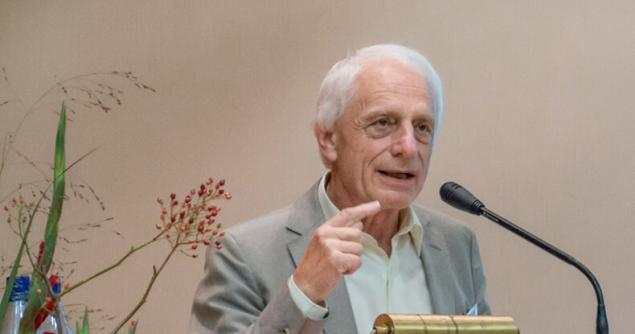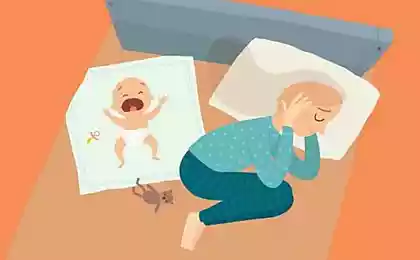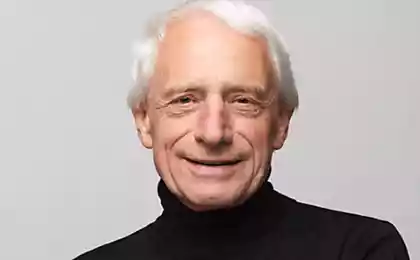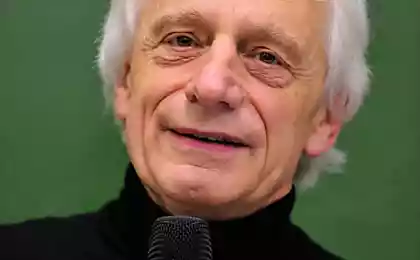87
Alfried Langle: What really keeps a couple together
Conference “On Love, Loneliness and Happiness in Relationships” Existential-analytical therapy of couples was made by the famous Austrian psychotherapist, representative of existential analysis, Alfried Langle. “I want to look at topics like person, relationships, suffering in relationships and find some relationships.”

I am.
Every person is a person, a person, a Person. As a Person, a person stands on two legs: on the one hand, he is inside himself, on the other hand, he is intentionally directed at the other or at others. As a Person, we are open to the world (this is Scheler’s thought), and thus to a partner in a relationship, in such a way that a person cannot be only himself, relying on himself.
Without the Other, I don't eat. More specifically: I cannot be without the Other. As an adult, I cannot be completely self without the Other. For this anthropological fact, Frankl introduced the concept of self-transcendence.
But no matter how much we need another, another cannot do everything for us. The other cannot replace us, cannot represent us. Each person as a Person must master his own life, lead his own life, find himself, be able to relate to himself. Be able to be good with yourself and be able to talk well with yourself, be in dialogue with yourself, including without the other. A person should be able to be alone without others.
So as a Person, I'm involved in my own inner world, and at the same time in another world, the outer world. Therefore, man from the very beginning is in a dual position, a dual relation. And here, in this place, the problems of couples begin - because I am such a couple in my own way, in my attitude outside and inward. I connect these two poles: intimacy and openness to the world. This fundamental binary is rooted in the essence of man.
Generally speaking, A person can be with other people or another person, but he cannot only be with another person. He has to limit himself and be with himself. This is a typical field of tension in which a couple is located: between selfishness and bestowal, dissolution, loss of oneself in another, in a relationship. When there is a relationship with another, there is a danger. In relation to himself, there is a similar danger. Because if I can't deal with myself and I can't stand myself, if I can't stand myself, if I can't stand on my feet with confidence, then I tend to relate to others. And then the other kind of has to replace what I can not realize for myself.
Only from the ability to be with oneself can co-existence arise. So working with a couple in existential therapy is like working with an individual. A person, his being is so arranged that he is predisposed to have a relationship with another person. I advocate that the problems of the couple should not be treated only from the point of view of a systematic approach. A systematic approach provides very valuable observations, but a personal view of each person is needed. The basis of a couple is the personality of each person in a pair.
II
What is a couple? A couple is something that belongs to one another. Two is not a pair. For example, a pair of shoes belong to each other, both shoes together make up a whole. So if I have two shoes, but both on the left, it's not a pair. A couple of people make us. But just two people don't make us. If we miss one thing, the other feels it: “I miss it.”
We have something in common. Couples who live a life together tend to have an emotional relationship – we call it love. It is only through the experience of the fact that through the Other I complete myself to the whole, become the whole, that a new quality of experience arises. If this person is not there, then something is missing. A pair is more than the sum of two persons.
My singularity in a pair is partly lost, and through being in a pair I have added value. The right shoe gets added value thanks to the left shoe. As a couple, two people are connected to each other and experience themselves as part of a certain community: I get something through you that I alone do not have.
III III III
How do two people relate to each other? There are two kinds of relationships: relationship and meeting.
What is a relationship? This is a constant form of interaction. That is, a person somehow relates to another person, constantly has him in mind. For example, if I see someone, I can’t stop them – they’re just in my sight.
Thus, if two people meet, they cannot but enter into a relationship. There's a kind of forced moment here. When there is another in front of me, I feel it differently than when there is no other in front of me. I'm always in touch with something, I'm always at peace.
So relationships are long-lasting, they are long-lasting, and they contain the totality of the experiences we have gained in life. And it stays there forever. So when a couple comes to therapy and the wife says, “Remember, thirty years ago, you really hurt me?” when the husband does not remember anything, it means that the relationship is a container in which everything is collected and stored, nothing is lost. Naturally, some new experience is added there, which can change the totality of experience.
Meeting is another form of communication that couples are involved in. If a relationship revolves around the cognitive and emotional components, then the meeting is personal. What is a meeting? I meet you, and you meet me. These two poles are connected not by a line, but by a field (that between us).
This field exists only when you and I actually meet. If they don't match, don't resonate, then this field folds and the meeting doesn't happen. Therefore, you can want a meeting, strive for it, make a decision about it. The meeting is punctual - it happens at that moment.
Continuing relationships need meetings to take place. When meetings happen, relationships change. Through meetings, we can work with relationships. If the meeting does not occur, the relationship becomes automatic. And a person feels that he is “lucky in hell” – because psychodynamics drags him into automatisms, and We become functional, material, and not personal.
Naturally, in the life of each couple there is both: relationships and meetings. Both are necessary. But relationships live through meetings.
IV.
What is the structure of the relationship in a couple? If we look at a couple’s relationship existentially, we find a fundamental structure that gives us the basis for couple therapy.
In any couple’s relationship, each person has a need, desire, motivation to “be able to be in this relationship.” This is the first fundamental motivation. I want to be where you are. Like, I want to live with you. Or go somewhere together. I want to be with you because you let me be in this relationship. I can be with you. You give me protection, support, you are ready to help me, or you give me, for example, a material basis for life, an apartment. I can trust you because you're loyal, reliable.
The second fundamental motivation in a couple’s relationship. This is the man I want to live with. This is where I feel life. This man touches me. It makes me warm. I want to live with you, I want to spend time with you. Your intimacy is desired for me, it animates me. I feel your attraction, you attract me. And we have common values that we share, like sports or music or whatever.
The third dimension of being in pairs. With this man, I have the right to be who I am. Moreover, with him I become more myself than outside of this relationship – not just who I am, but who I can be. It is through you that I become more myself. I feel recognized and seen by you. I have respect. You take me seriously and you are fair to me. I see that you accept me, that I am an absolute value for you. You may not agree with all of my thoughts and actions. But exactly what I am is right for you, you accept it.
And the fourth is the general meaning. Together we want to build a world, share some common values, do something for the future. We want to work on something, whether it’s ourselves or something in the world outside of our relationship, and that ties us together.
When all four of these structures are in order, this is the ideal form of relationship, since all the basic bases of existence can be experienced in these relationships. And here we go to the practical plane.
V.
What really keeps a couple together? We can say that each of the four basic motivations holds the pair together.
The first plane is some practical side that allows a person to live in peace. For example, we share an apartment – where should I go? A quarter of couples, or maybe more, live together for that reason. No romance, no personality. The reality is that there is nowhere to go. There is common money, division of labor. We can go on vacation together, but we can't do it alone.
The second level is the warmth I can experience with another, tenderness, sexuality. Sometimes, there is nothing to talk about with each other, and it works.
The third is the personal level. I'm not alone when I come home, there's a man, not just a cat.
And fourth, we have a common project, a common task in the world, and so it makes sense to stay together. Most often, children act as such a project while they are young. Or, for example, a joint venture.
These four structures of existence are like the glue that holds a pair together. There is a very famous, even famous, study about couples that was conducted by Goleman, author of Emotional Intelligence. This study confirms what I am talking about. Goleman uses slightly different formulations, but the ideas are similar. He studied thousands of couples, and found that within four years, all couples who had the following four symptoms had divorced or separated (they also failed to fulfill the four existences listed above).
You can predict with 93% accuracy that a couple will divorce if:
1. One of the pair takes a defensive position. In existential-analytical language, this means that they are in the plane of the first fundamental motivation: it seeks protection. This position is devastating the relationship.
2. At least one partner is constantly criticizing the other. It means he devalues the other. And the other has a feeling: he can't see me, I can't be with him. This is the third fundamental motivation and partly the first.
3. This aspect plays a central role. If there is disrespect or mutual depreciation, then the pair will separate. It means destroying your sense of worth. The person feels that they are not seen. Personality does not appear in relationships.
4. There is closure. If at least one of the pair is closed, then there is no common life of events, experience of meaning.
These couples, even if they go to therapy, have the worst chance of staying in the relationship. They cannot find personal relationships with each other. In such couples, the inability to personal relationships of at least one of the partners is clearly manifested. And another cannot do it for him, make up for it. Such a person is not capable of long-term relationships, he needs more maturation, development. You have to deal with his problems and injuries.
Goleman videotaped it all. In these videos, in the first 15 minutes of conversation on nonverbal communication, you can state what the prognosis of this pair has. For example, they sit in such a position that they do not look into each other’s eyes. Or make humiliating gestures. Facial expressions and gestures are the fastest communication. Generally speaking, therapy is very rarely as predictable as in this study.
VI VI VI
What keeps a couple together? All 4 fundamental motivations, but especially the third. If it’s not about a functional relationship, respecting the other, accepting the other, feeling the value of the other is a fundamental premise. But it only works if I can be with myself and not be dependent on another through unmet needs.
In good relationships, couples meet two independent people who do not need each other, in which each can live and one without the other. But they feel that together they are better, more beautiful. If I am with another, I develop. I feel joy when I see you open up, blossom.
Thus, couples in a relationship hold a more personal relationship – respect, common interest, the feeling that the other sees and perceives me, that I can be more myself with this person.
A few questions to understand relationships.
What is important to me in a relationship? If I have a relationship, I can ask myself, what is important to me in that relationship? What do I want in a relationship? What do I want to feel like I'm attracted to? What do I think is important to my partner? Have we ever talked about this at all? Or maybe I have a fear of getting into a relationship? How much fear do I have, fear of expectations? What is the worst thing about this relationship for me? A man's fear is to be swallowed. A woman’s fear of being used, of being “abused.”
What's my idea of a relationship? Should there be certain roles in the family: the husband has one, the wife has another? How close and open should the relationship be? How much free space do we want to give each other? Which need do I have more, a merger or autonomy? How much better should it be a partnership, a dialogue, or a hierarchical relationship—because then things are easier?
VIII
Relationships are stabilized through love. Love is the strongest factor that keeps people together. Love wants good for another. A lover asks who you are, what you are interested in, who you are. The lover wants to live for the other, for you, and stand on your side, in your defense.
If we analyze the need for love, we find the same basic existential structure. We need protection and support, we need intimacy, attention, respect, a common place to open up. If these existential needs are not fulfilled, psychodynamics is mixed in and problems arise.
Needs are a big problem in couples therapy. Needs are perceived deficits that become vital. They are endowed with psychodynamic vital power, they are depersonal. A couple’s problem is never personal. Because the personal is what brings healing. The problem is depersonalization, anonymization.
Needs are selfish, and any psychodynamics is selfish, and this is the qualitative difference. The need, for example, for love, for recognition, for respect, in order to be satisfied, tends to use the other to satisfy these needs.
And the other one notices that there is something wrong with the relationship, and even the ideal partner starts to defend himself in the relationship. In most cases, the other person has unmet needs. And so there are persistent patterns fueled by this psychodynamics.
Thus, personality is pushed to the background, and the functional comes to the fore, the relationship begins to be user-friendly, both partners begin to use the other for their own purposes. Naturally, to a certain extent we can accept and fulfill the needs of others. If a person is strong enough in this fundamental motivation, then he can satisfy this need to a certain extent.
As one of the tasks of therapy, we consider that the couple helps each other to meet the deficits that each has. But this only happens when we can talk about it and discuss it in dialogue. Because if this psychodynamics happens by itself, automatically, it depersonalizes, degrades. A person should not allow himself to be used. Even in love, he should not let himself be used.
VIII
How does couples counselling work? Let's take a simple model. In counseling, it is about taking the weight of the conflict off. This process consists of 4 steps.
The first step is cargo release: we remove the cargo from the specific situation in which the couple is currently in. In accordance with the first fundamental motivation, we look at the state of affairs: what is? At this level, we do not yet address the issues of relations. But if we remain almost exclusively on the basis of facts, what can people do now to alleviate the severity of the situation? The couple want to experience a miracle. But they must learn to see what the next step is and not question everything fundamentally. Such a sobriety of sight gives some relief.
And then we start the second step, and we build the foundation. We look at what these people have in common at the moment. And we clarify what each of the two people contribute to this common goal, and what each is ready for.
The third step is to develop relationships. The care or cultivation of what is worthy of love, on the basis of which love can be grown. What I can love about others is a resource in that relationship. We're working with the resource. What do I see in another that is worthy of my love? What can I do to be worthy of your love?
And the fourth step is to discuss deeper issues: hurts, weaknesses, incapacities.
IXX
Let me name the central elements of couples therapy.
1. The position of the therapist, his setting. The therapist, as it were, belongs to both parties equally, he has no right to cultivate secret sympathy for someone in a pair. This position is quite difficult. It is important for the couple to see that the therapist is on both sides. Thus, the main position of the therapist is I as a mediator in the dialogue. We need to promote dialogue in a couple, because dialogue is a healing moment.
The therapist should respond immediately if the couple starts to swear. You can do it at home, it doesn’t belong here. Therapy immediately crumbles if the therapist allows them to swear. You can make an exception, but not for more than 1-2 minutes, then go back and analyze what happened.
2. Phenomenological point of view. As phenomenologists, we look at a couple and ask ourselves: what is everyone fighting for? what is everyone suffering from? why can't these two solve problems? For example, if a defensive position is discovered and the pair only exchange claims against each other, there may be frustration with unfulfilled expectations behind it. It is necessary to identify and clarify expectations: how realistic are they, how ready is the person to do what he expects from another? Expectations are desires. In existential analysis, we turn desire into will.
3. Promoting dialogue. The development of dialogue is the core or heart of a couple’s existential-analytical therapy. He has two premises: one who is willing to say what he cares about, and another who is willing to listen. Dialogue begins with a hearing. The therapist asks each couple to describe their problem.
The other has to listen to him: it's not always easy, but he has to listen. Then we ask the listener to repeat what the first said. And then we expand that, and as a next step, we introduce empathy -- what we call self-transcendence. We ask: what do you think your partner actually has?
Here the image of the other is requested (I look at myself through the eyes of the other and, asking such a question, the person begins to think and speak). So we try to build a dialogue with the support of the therapist. The therapist in this case is the mediator and bridge builder.
4. Relationship motivation. The couple wonders: why are we together? what was the first motivation when we entered into a relationship?
5. The thought of a breakup. Why don't we separate? A good couple should break up if it's best for the other. This thought often provokes psychodynamics.
6. Constructive help to the couple. Here we are again in touch with 4 fundamental motivations, but now in an active way. Where am I really present for my partner? Do I like my partner? Do I appreciate him? Can I tell him that? What good can grow out of our relationship? What do I see in common?
If we can open our eyes to the commons and discover what I can bring to the relationship, and instead of waiting and talking to others about what I really care about, then the couple really have a chance. Then we, as therapists, can rejoice to be present in a personal conversation. Thank you very much. published
Read also: Ruminations: How to Throw Out Mental Gum
What to do if you just hate cleaning
P.S. And remember, just changing our consumption – together we change the world!
Source: thezis.ru/chto-uderzhivaet-paru-vmeste-lektsiya-alfrida-lengle.html

I am.
Every person is a person, a person, a Person. As a Person, a person stands on two legs: on the one hand, he is inside himself, on the other hand, he is intentionally directed at the other or at others. As a Person, we are open to the world (this is Scheler’s thought), and thus to a partner in a relationship, in such a way that a person cannot be only himself, relying on himself.
Without the Other, I don't eat. More specifically: I cannot be without the Other. As an adult, I cannot be completely self without the Other. For this anthropological fact, Frankl introduced the concept of self-transcendence.
But no matter how much we need another, another cannot do everything for us. The other cannot replace us, cannot represent us. Each person as a Person must master his own life, lead his own life, find himself, be able to relate to himself. Be able to be good with yourself and be able to talk well with yourself, be in dialogue with yourself, including without the other. A person should be able to be alone without others.
So as a Person, I'm involved in my own inner world, and at the same time in another world, the outer world. Therefore, man from the very beginning is in a dual position, a dual relation. And here, in this place, the problems of couples begin - because I am such a couple in my own way, in my attitude outside and inward. I connect these two poles: intimacy and openness to the world. This fundamental binary is rooted in the essence of man.
Generally speaking, A person can be with other people or another person, but he cannot only be with another person. He has to limit himself and be with himself. This is a typical field of tension in which a couple is located: between selfishness and bestowal, dissolution, loss of oneself in another, in a relationship. When there is a relationship with another, there is a danger. In relation to himself, there is a similar danger. Because if I can't deal with myself and I can't stand myself, if I can't stand myself, if I can't stand on my feet with confidence, then I tend to relate to others. And then the other kind of has to replace what I can not realize for myself.
Only from the ability to be with oneself can co-existence arise. So working with a couple in existential therapy is like working with an individual. A person, his being is so arranged that he is predisposed to have a relationship with another person. I advocate that the problems of the couple should not be treated only from the point of view of a systematic approach. A systematic approach provides very valuable observations, but a personal view of each person is needed. The basis of a couple is the personality of each person in a pair.
II
What is a couple? A couple is something that belongs to one another. Two is not a pair. For example, a pair of shoes belong to each other, both shoes together make up a whole. So if I have two shoes, but both on the left, it's not a pair. A couple of people make us. But just two people don't make us. If we miss one thing, the other feels it: “I miss it.”
We have something in common. Couples who live a life together tend to have an emotional relationship – we call it love. It is only through the experience of the fact that through the Other I complete myself to the whole, become the whole, that a new quality of experience arises. If this person is not there, then something is missing. A pair is more than the sum of two persons.
My singularity in a pair is partly lost, and through being in a pair I have added value. The right shoe gets added value thanks to the left shoe. As a couple, two people are connected to each other and experience themselves as part of a certain community: I get something through you that I alone do not have.
III III III
How do two people relate to each other? There are two kinds of relationships: relationship and meeting.
What is a relationship? This is a constant form of interaction. That is, a person somehow relates to another person, constantly has him in mind. For example, if I see someone, I can’t stop them – they’re just in my sight.
Thus, if two people meet, they cannot but enter into a relationship. There's a kind of forced moment here. When there is another in front of me, I feel it differently than when there is no other in front of me. I'm always in touch with something, I'm always at peace.
So relationships are long-lasting, they are long-lasting, and they contain the totality of the experiences we have gained in life. And it stays there forever. So when a couple comes to therapy and the wife says, “Remember, thirty years ago, you really hurt me?” when the husband does not remember anything, it means that the relationship is a container in which everything is collected and stored, nothing is lost. Naturally, some new experience is added there, which can change the totality of experience.
Meeting is another form of communication that couples are involved in. If a relationship revolves around the cognitive and emotional components, then the meeting is personal. What is a meeting? I meet you, and you meet me. These two poles are connected not by a line, but by a field (that between us).
This field exists only when you and I actually meet. If they don't match, don't resonate, then this field folds and the meeting doesn't happen. Therefore, you can want a meeting, strive for it, make a decision about it. The meeting is punctual - it happens at that moment.
Continuing relationships need meetings to take place. When meetings happen, relationships change. Through meetings, we can work with relationships. If the meeting does not occur, the relationship becomes automatic. And a person feels that he is “lucky in hell” – because psychodynamics drags him into automatisms, and We become functional, material, and not personal.
Naturally, in the life of each couple there is both: relationships and meetings. Both are necessary. But relationships live through meetings.
IV.
What is the structure of the relationship in a couple? If we look at a couple’s relationship existentially, we find a fundamental structure that gives us the basis for couple therapy.
In any couple’s relationship, each person has a need, desire, motivation to “be able to be in this relationship.” This is the first fundamental motivation. I want to be where you are. Like, I want to live with you. Or go somewhere together. I want to be with you because you let me be in this relationship. I can be with you. You give me protection, support, you are ready to help me, or you give me, for example, a material basis for life, an apartment. I can trust you because you're loyal, reliable.
The second fundamental motivation in a couple’s relationship. This is the man I want to live with. This is where I feel life. This man touches me. It makes me warm. I want to live with you, I want to spend time with you. Your intimacy is desired for me, it animates me. I feel your attraction, you attract me. And we have common values that we share, like sports or music or whatever.
The third dimension of being in pairs. With this man, I have the right to be who I am. Moreover, with him I become more myself than outside of this relationship – not just who I am, but who I can be. It is through you that I become more myself. I feel recognized and seen by you. I have respect. You take me seriously and you are fair to me. I see that you accept me, that I am an absolute value for you. You may not agree with all of my thoughts and actions. But exactly what I am is right for you, you accept it.
And the fourth is the general meaning. Together we want to build a world, share some common values, do something for the future. We want to work on something, whether it’s ourselves or something in the world outside of our relationship, and that ties us together.
When all four of these structures are in order, this is the ideal form of relationship, since all the basic bases of existence can be experienced in these relationships. And here we go to the practical plane.
V.
What really keeps a couple together? We can say that each of the four basic motivations holds the pair together.
The first plane is some practical side that allows a person to live in peace. For example, we share an apartment – where should I go? A quarter of couples, or maybe more, live together for that reason. No romance, no personality. The reality is that there is nowhere to go. There is common money, division of labor. We can go on vacation together, but we can't do it alone.
The second level is the warmth I can experience with another, tenderness, sexuality. Sometimes, there is nothing to talk about with each other, and it works.
The third is the personal level. I'm not alone when I come home, there's a man, not just a cat.
And fourth, we have a common project, a common task in the world, and so it makes sense to stay together. Most often, children act as such a project while they are young. Or, for example, a joint venture.
These four structures of existence are like the glue that holds a pair together. There is a very famous, even famous, study about couples that was conducted by Goleman, author of Emotional Intelligence. This study confirms what I am talking about. Goleman uses slightly different formulations, but the ideas are similar. He studied thousands of couples, and found that within four years, all couples who had the following four symptoms had divorced or separated (they also failed to fulfill the four existences listed above).
You can predict with 93% accuracy that a couple will divorce if:
1. One of the pair takes a defensive position. In existential-analytical language, this means that they are in the plane of the first fundamental motivation: it seeks protection. This position is devastating the relationship.
2. At least one partner is constantly criticizing the other. It means he devalues the other. And the other has a feeling: he can't see me, I can't be with him. This is the third fundamental motivation and partly the first.
3. This aspect plays a central role. If there is disrespect or mutual depreciation, then the pair will separate. It means destroying your sense of worth. The person feels that they are not seen. Personality does not appear in relationships.
4. There is closure. If at least one of the pair is closed, then there is no common life of events, experience of meaning.
These couples, even if they go to therapy, have the worst chance of staying in the relationship. They cannot find personal relationships with each other. In such couples, the inability to personal relationships of at least one of the partners is clearly manifested. And another cannot do it for him, make up for it. Such a person is not capable of long-term relationships, he needs more maturation, development. You have to deal with his problems and injuries.
Goleman videotaped it all. In these videos, in the first 15 minutes of conversation on nonverbal communication, you can state what the prognosis of this pair has. For example, they sit in such a position that they do not look into each other’s eyes. Or make humiliating gestures. Facial expressions and gestures are the fastest communication. Generally speaking, therapy is very rarely as predictable as in this study.
VI VI VI
What keeps a couple together? All 4 fundamental motivations, but especially the third. If it’s not about a functional relationship, respecting the other, accepting the other, feeling the value of the other is a fundamental premise. But it only works if I can be with myself and not be dependent on another through unmet needs.
In good relationships, couples meet two independent people who do not need each other, in which each can live and one without the other. But they feel that together they are better, more beautiful. If I am with another, I develop. I feel joy when I see you open up, blossom.
Thus, couples in a relationship hold a more personal relationship – respect, common interest, the feeling that the other sees and perceives me, that I can be more myself with this person.
A few questions to understand relationships.
What is important to me in a relationship? If I have a relationship, I can ask myself, what is important to me in that relationship? What do I want in a relationship? What do I want to feel like I'm attracted to? What do I think is important to my partner? Have we ever talked about this at all? Or maybe I have a fear of getting into a relationship? How much fear do I have, fear of expectations? What is the worst thing about this relationship for me? A man's fear is to be swallowed. A woman’s fear of being used, of being “abused.”
What's my idea of a relationship? Should there be certain roles in the family: the husband has one, the wife has another? How close and open should the relationship be? How much free space do we want to give each other? Which need do I have more, a merger or autonomy? How much better should it be a partnership, a dialogue, or a hierarchical relationship—because then things are easier?
VIII
Relationships are stabilized through love. Love is the strongest factor that keeps people together. Love wants good for another. A lover asks who you are, what you are interested in, who you are. The lover wants to live for the other, for you, and stand on your side, in your defense.
If we analyze the need for love, we find the same basic existential structure. We need protection and support, we need intimacy, attention, respect, a common place to open up. If these existential needs are not fulfilled, psychodynamics is mixed in and problems arise.
Needs are a big problem in couples therapy. Needs are perceived deficits that become vital. They are endowed with psychodynamic vital power, they are depersonal. A couple’s problem is never personal. Because the personal is what brings healing. The problem is depersonalization, anonymization.
Needs are selfish, and any psychodynamics is selfish, and this is the qualitative difference. The need, for example, for love, for recognition, for respect, in order to be satisfied, tends to use the other to satisfy these needs.
And the other one notices that there is something wrong with the relationship, and even the ideal partner starts to defend himself in the relationship. In most cases, the other person has unmet needs. And so there are persistent patterns fueled by this psychodynamics.
Thus, personality is pushed to the background, and the functional comes to the fore, the relationship begins to be user-friendly, both partners begin to use the other for their own purposes. Naturally, to a certain extent we can accept and fulfill the needs of others. If a person is strong enough in this fundamental motivation, then he can satisfy this need to a certain extent.
As one of the tasks of therapy, we consider that the couple helps each other to meet the deficits that each has. But this only happens when we can talk about it and discuss it in dialogue. Because if this psychodynamics happens by itself, automatically, it depersonalizes, degrades. A person should not allow himself to be used. Even in love, he should not let himself be used.
VIII
How does couples counselling work? Let's take a simple model. In counseling, it is about taking the weight of the conflict off. This process consists of 4 steps.
The first step is cargo release: we remove the cargo from the specific situation in which the couple is currently in. In accordance with the first fundamental motivation, we look at the state of affairs: what is? At this level, we do not yet address the issues of relations. But if we remain almost exclusively on the basis of facts, what can people do now to alleviate the severity of the situation? The couple want to experience a miracle. But they must learn to see what the next step is and not question everything fundamentally. Such a sobriety of sight gives some relief.
And then we start the second step, and we build the foundation. We look at what these people have in common at the moment. And we clarify what each of the two people contribute to this common goal, and what each is ready for.
The third step is to develop relationships. The care or cultivation of what is worthy of love, on the basis of which love can be grown. What I can love about others is a resource in that relationship. We're working with the resource. What do I see in another that is worthy of my love? What can I do to be worthy of your love?
And the fourth step is to discuss deeper issues: hurts, weaknesses, incapacities.
IXX
Let me name the central elements of couples therapy.
1. The position of the therapist, his setting. The therapist, as it were, belongs to both parties equally, he has no right to cultivate secret sympathy for someone in a pair. This position is quite difficult. It is important for the couple to see that the therapist is on both sides. Thus, the main position of the therapist is I as a mediator in the dialogue. We need to promote dialogue in a couple, because dialogue is a healing moment.
The therapist should respond immediately if the couple starts to swear. You can do it at home, it doesn’t belong here. Therapy immediately crumbles if the therapist allows them to swear. You can make an exception, but not for more than 1-2 minutes, then go back and analyze what happened.
2. Phenomenological point of view. As phenomenologists, we look at a couple and ask ourselves: what is everyone fighting for? what is everyone suffering from? why can't these two solve problems? For example, if a defensive position is discovered and the pair only exchange claims against each other, there may be frustration with unfulfilled expectations behind it. It is necessary to identify and clarify expectations: how realistic are they, how ready is the person to do what he expects from another? Expectations are desires. In existential analysis, we turn desire into will.
3. Promoting dialogue. The development of dialogue is the core or heart of a couple’s existential-analytical therapy. He has two premises: one who is willing to say what he cares about, and another who is willing to listen. Dialogue begins with a hearing. The therapist asks each couple to describe their problem.
The other has to listen to him: it's not always easy, but he has to listen. Then we ask the listener to repeat what the first said. And then we expand that, and as a next step, we introduce empathy -- what we call self-transcendence. We ask: what do you think your partner actually has?
Here the image of the other is requested (I look at myself through the eyes of the other and, asking such a question, the person begins to think and speak). So we try to build a dialogue with the support of the therapist. The therapist in this case is the mediator and bridge builder.
4. Relationship motivation. The couple wonders: why are we together? what was the first motivation when we entered into a relationship?
5. The thought of a breakup. Why don't we separate? A good couple should break up if it's best for the other. This thought often provokes psychodynamics.
6. Constructive help to the couple. Here we are again in touch with 4 fundamental motivations, but now in an active way. Where am I really present for my partner? Do I like my partner? Do I appreciate him? Can I tell him that? What good can grow out of our relationship? What do I see in common?
If we can open our eyes to the commons and discover what I can bring to the relationship, and instead of waiting and talking to others about what I really care about, then the couple really have a chance. Then we, as therapists, can rejoice to be present in a personal conversation. Thank you very much. published
Read also: Ruminations: How to Throw Out Mental Gum
What to do if you just hate cleaning
P.S. And remember, just changing our consumption – together we change the world!
Source: thezis.ru/chto-uderzhivaet-paru-vmeste-lektsiya-alfrida-lengle.html









